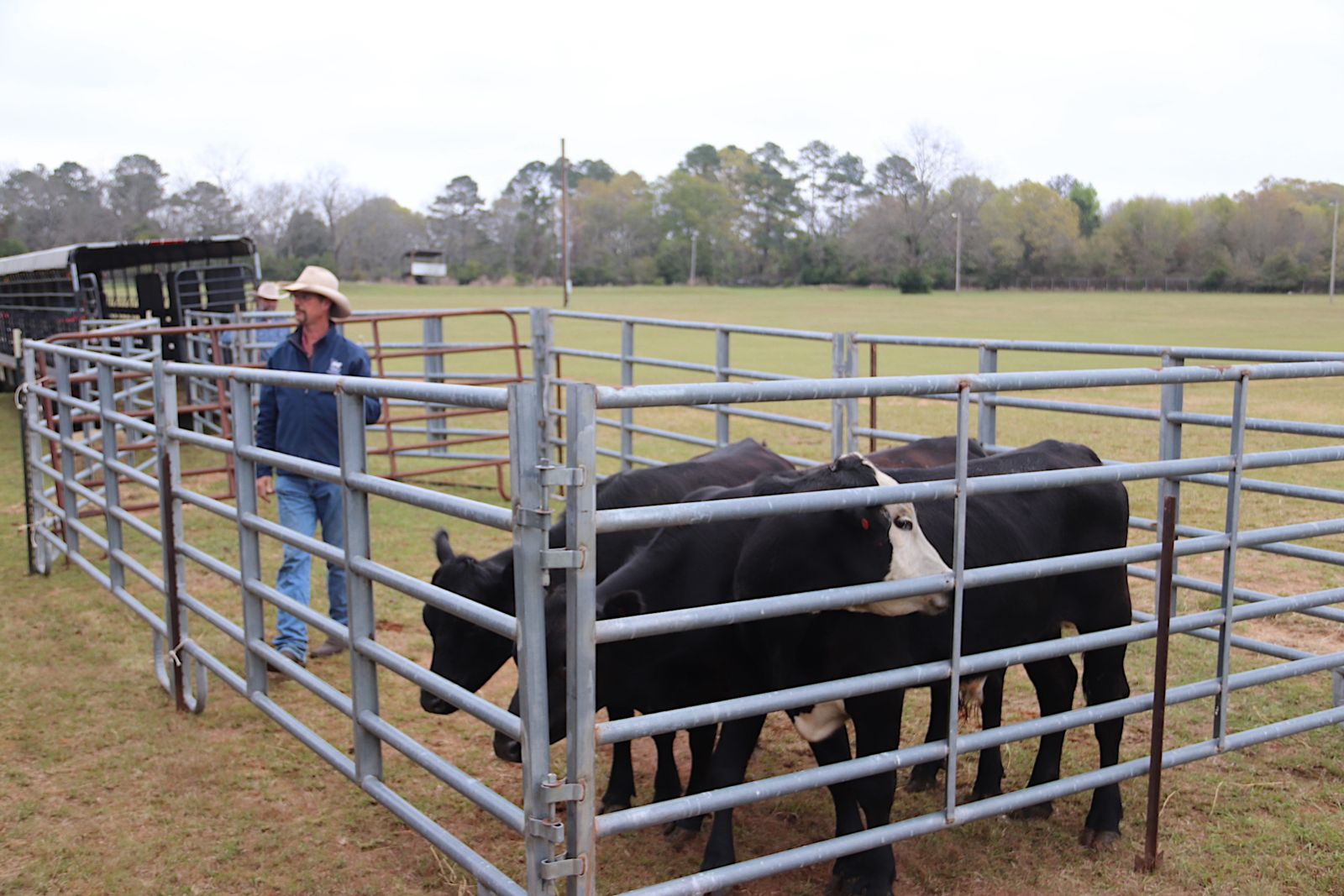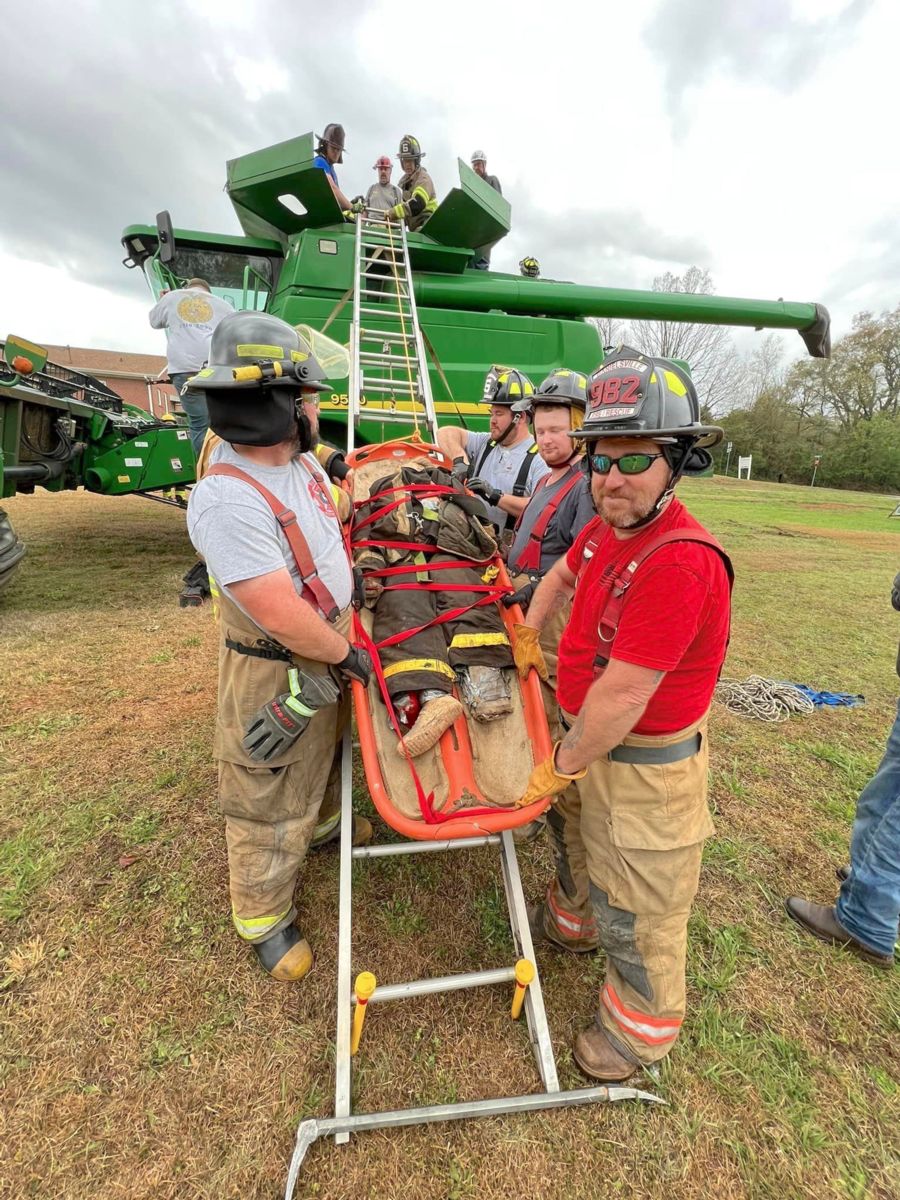GFB News Magazine
Farm Bureau safety events aim to save lives
Posted on May 6, 2023 8:00 PM

UGA Animal & Dairy Science Farm Manager Andy Dunn demonstrates how to move cattle without causing them stress, thereby protecting the farmer from potential injury. /Photo by Jay Stone
By Jay Stone, Georgia Farm Bureau
In 2021, workers in the agriculture, forestry, fishing and hunting industry experienced one of the highest fatal injury rates at 20 deaths per 100,000 full-time workers, compared to a rate of 3.6 deaths per 100,000 workers for all U.S. industries, according to the CDC. Transportation incidents, which include tractor overturns and roadway crashes, were the leading cause of death for farmers and farm workers.
This spring, Sumter County Farm Bureau and GFB Young Farmers & Ranchers Committee 2nd Dist. Representative Colt Hart organized safety events for their regions to decrease these numbers.
Sumter County hosts safety event
Four-year-old Lane Aldridge took the pilot seat in the Air Evac Lifeteam Bell 260 helicopter, under the watchful eye of pilot Don Heironimus. The boy’s face lit up at the sight of all the switches, knobs and gauges aviation has to offer. The controls and the view through the chopper’s bubble windshield had the full attention of Aldridge, during the Sumter County Farm Safety Day in Americus.
To be sure, Sumter County Farm Bureau (SCFB), which hosted the event March 17, wanted it to be an attention-getter that might prevent an accident, sidestep an injury or save a life.
The event at the Sumter County Fairgrounds addressed stress (human and bovine), accident prevention and rescue operations in hopes that area farmers would come away with increased awareness on safety topics.
“Every year we have farm-related accidents,” said SCFB President Matt Berry, who organized
the event. “My goal is for somebody to leave here with a different perspective that will help change that. If we save one person from an accident or a death or injury, then we’ve won what we’re after.”
Organizers shared a video message from South Dakota Gov. Kristi Noem, whose father died in a grain bin entrapment incident, and Sumter County Fire and Rescue personnel staged a demonstration of a grain entrapment rescue.
UGA Extension Southwest Health Agent Jennifer Dunn presented information about managing farm stress. Dunn talked about ways people cope with stress – some healthy, some not – and shared how breath control can help in stressful situations.
Dunn said studies have shown that deep breaths can shift the portion of the brain controlling behavior from the “fight-or-flight” portion of the nervous system to the more rational, higher-functioning thought center (prefrontal cortex). One approach, endorsed by the Navy SEALs, is called box breathing, in which the individual inhales for four seconds, exhales for four seconds, inhales for four seconds, exhales for four seconds, and so on.
UGA Animal & Dairy Science Farm Manager Andy Dunn demonstrated how to prompt cattle to move without causing them stress by using the animals’ flight zones, areas in relation to their bodies that, when entered, prompt them to move away.
South Georgia Technical College Commercial Truck Driving Instructor Robert Cook and Georgia Motor Carrier Compliance Division Lt. Jonathan Schwendinger chatted with participants about road safety and rules pertaining to tractor-trailer rigs transporting farm goods.
Jim Reid of Reid Brothers Irrigation presented information on electrical and irrigation pivot safety.
Air Evac representative Laine Lee shared information about the company’s emergency evacuation operations, targeted at rescuing medical emergency victims from remote areas. Farm Bureau members get a discount on Air Evac subscription fees.
GFB 2nd District hosts rescue training
By Katie Alt, Georgia Farm Bureau
Twenty-two volunteer firefighters gathered March 24-26 for a Farm Machinery Rescue Training held by Georgia Farm Bureau’s Second District with training led by the Tennessee Association of Rescue Squads (TNARS). Attendees were able to earn 16 continuing education hours while being trained in the classroom and on the ground in numerous farm rescue drills. Scenarios included those with a hay baler, tractor, combine, and skid steer.
“Statistically speaking, agriculture has been one of the top three most dangerous occupations for many years,” said Brian Robinson, TNARS training coordinator.
Robinson encourages farmers to pre-plan just like emergency responders do.
“Take a walk around the shop, farm, barn, equipment etc. and see what hazards are there or could be potential hazards,” he said.
Robinson also advises farmers to work with neighbors and family members on a plan in the event of an emergency.
“A lot of times a neighbor or family member will be called to assist and no one remembers to contact 911. Calling 911 first, then going to render aid gets the emergency response wheels in motion,” Robinson said.
It’s important to be prepared for an emergency, Robinson said. Simple things Robinson suggests farmers do to be prepared include labeling containers with their contents, knowing eye wash procedures and having clean water close, having your charged cell phone nearby or having a charger in the equipment. It’s also important to let someone know where you’ll be working on the farm and your expected time of arrival/departure.
“Another simple thing for someone who has multiple chicken houses is to label or paint a number on each house so responders can go directly to the incident when they arrive, instead of driving around trying to figure out which house the victim is in,” said Robinson.
Robinson encourages anyone interested in hosting a similar training to visit www.tnars.org.

Volunteer firefighters in Northeast Georgia learn how to rescue farmers injured in farm machinery accidents during an event GFB's District 2 held in March. / Photo courtesy of Tennessee Association of Rescue Squads